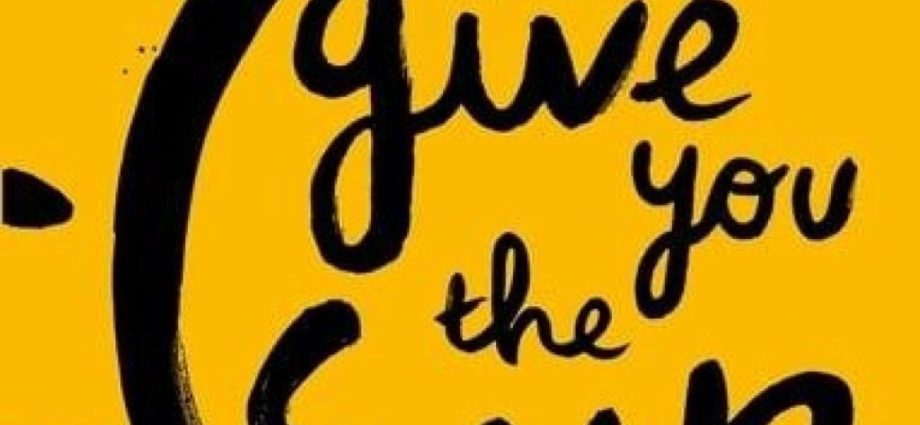
I’ll Give You The Sun by Jandy Nelson is a beautifully written book that tells the story of a set of twins that are worlds apart. Noah and Jude are as close as any siblings could be, sharing their imaginary world and reading each other like a book. When a family tragedy occurs, the pair become estranged as they hide behind false versions of themselves and compete for attention.
The tortured artist archetype runs throughout the family, giving the reader beautiful imagery as the story jumps between Noah and Jude’s perspectives at different points in their young lives. Noah is a painfully relatable character for those who have gone through the internal struggle with their sexuality at a young age, a heartbreaking representation of what those in the LGBTQ+ community go through growing up. The book also depicts the interesting psychology behind sibling rivalries, and the negative and lasting impact they can have on a person.
It’s clear that the sibling rivalry is set up in the twins’ childhoods; their father is closest with his daredevil daughter and their mother nurtures her sensitive son. This instils bad habits that cause them to sabotage each other in order to win their parents’ approval. As children, people are mean to their siblings, it’s not uncommon behaviour. But as the twins grow older and try to cope with the heartbreaking tragedy, the family is torn apart with absent parenting and a brother and sister who want nothing more than to be better than the other. Their sibling rivalry grows from wanting their parent’s attention to competing for a higher social status amongst their peers, which pushes the siblings to commit hurtful acts to spite the other.
The book delves heavily into the tortured artist archetype, with both the twins and their mother depicting different versions of this trope. There are also various other side characters who act as mentors and peers to the protagonists who also seem to fit into this category quite well. Their mother wanted to live an exciting life filled with passion and appreciate artwork and creativity, but is held back by her marriage and motherly duties. This in itself is a big catalyst in the breakdown of the family. She values art over all else and allows this to interfere in how she interacts with her children, playing favourites based on their talent.
Noah himself uses his art as a means of expressing and escaping from his insecurities and fears. Though, it feels like he’s almost entirely disconnected from the people around him, and seeks the approval of other ‘geniuses’. Jude feels a sense of guilt around creating art, because she never got her mother’s approval on her work. Throughout the book, we see creatives who are miserable and use art as a means of escaping, to the point where they no longer seem to fit in with the real world.
Jumping between the twins’ points of view and two different timeframes means that the author allows you to witness the breakdown of the twins’ relationship from a young Noah’s perspective. A slightly older Jude is left to tell the story of their slow reconciliation. Even the layout of the novel sets up Noah to be the protagonist the audience sides with. The toxic competitive nature of the family is imposed on the reader without you even noticing it. Suddenly you end up blaming one of the kids for their behaviour even though it’s clear that it all stemmed from their upbringing. It almost feels as if you’re cleverly drawn into the confusing and harmful mindset that is imposed on the twins.
Initially, you’re drawn to Noah and feel empathetic towards him because we learn about his side of the story during their childhood. Noah is lonely and confused and his sister has everything he wants and doesn’t seem to notice. He’s very easy to relate to. Throughout the course of the story, we begin to understand Jude more, as we learn her motivations years later. We hear her side of the story as a teenager who has fallen apart in the wake of the tragedy. You can’t help but want to understand her. By the end of the book, nobody seems innocent, and you find yourself simply rooting for the twins to build a better relationship and reignite their closeness.
Much like the rest of the novel, the LGBTQ+ representation is realistic and bleak. Noah goes through the initial confusion and denial when he begins to realise his feelings, before accepting what he actually wants, which is men. He then falls in love, but finds himself in the exhausting cycle of wondering if it’s real or if it’s okay. The pair are closeted, and Noah goes to extreme lengths to hide his sexuality, outing his first love and causing unimaginable pain in the process. He ends up completely changing himself, hiding behind a false personality to protect his true feelings. It takes Noah a long time to accept who he is and attempt to right things with his first love. I’ll Give You The Sun is a whirlwind of romance and family and art, and you’ll find yourself unable to stop thinking about Noah and Jude. An exploration of an abundance of painful truths about growing up will leave you questioning society and the way it impacts kids and the way they treat other
Read more by Katie Maughan
Please follow us on social media, subscribe to our newsletter, and/or support us with a regular donation


